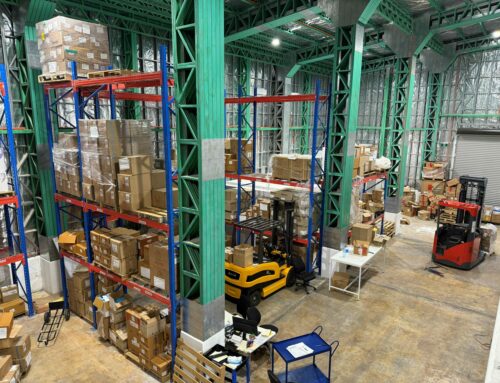It was all smiles in Nauru as the go-live of Tamanu at the country’s two dental clinics completed a remarkable world first for the island nation.
Nauru has become the first country in the world where every single clinical encounter in the public system is being recorded in a single, national Electronic Medical Record, with point-of-care access for all clinicians.
Nauru’s two dental clinics, based at the Anibare and Yaren Wellness Centres went live with Tamanu on 12 February this year. The three dentists, assisted by their dental nurses, picked up Tamanu quickly and though a BES staff member was at the clinics to provide support, after the first two days the dental staff were comfortably using Tamanu on their own.
In just the first month after Go-Live, there were 354 dental encounters recorded in Tamanu.
The launch of Tamanu at the dental clinics was the final piece in the puzzle that has seen Tamanu implemented across all health facilities in Nauru. Now, every encounter, for every patient, at every health care facility in the country is recorded in Tamanu, and staff across the system have access to a complete patient history, allowing for continuous, longitudinal care no matter where the patient is being seen.
This is a crucial point in a long program of work, which saw the launch of Tamanu at OPD at Republic of Nauru Hospital in early 2023, followed by the roll out of Tamanu across the rest of the hospital, Naoero Public Health Centre, the two Wellness Centre nursing clinics and finally at the dental clinics.
“Tamanu is unique. It is not a central national health records database that pulls basic encounter data from multiple different systems like Australia’s My Health Record. It is a point-of-care Electronic Medical Record with a distributed data model allowing simultaneous offline use across hundreds of facilities at a time. This means that you can run it in multiple facilities with local hardware (or via the cloud) and experience 100% offline functionality indefinitely when you lose connectivity to the central server. Tamanu will then sync in two directions whenever it has a connection to the central server – it is the only free and open-source EMR in the world that can do this across both desktop and mobile. The result is that all clinicians, in all settings, can access the entirety of a patient’s medical record whenever the patient is sitting in front of them”.
Emily Porrello, BES Head of Programs

BES Project Manager Regina Akacich leads training for Naoero Public Health staff in 2023
The implementation of a point-of-care EMR is of course only the first step towards a digital future in which patient outcomes are improved and public health decision making is guided by a true, data-driven evidence base. BES staff continue to work closely with the Nauru Ministry of Health to refine the use of the system, improve reporting, data quality and completeness, and to drive data for decision-making. Despite BES’ support however, this has been a truly locally-driven initiative, with a Ministry Steering Committee overseeing all aspects of the project.
Since the launch of Tamanu in Nauru in January 2023 there have been:
- 42,310 Outpatient encounters across all facilities
- 1,578 Hospital admissions
- 4,450 Emergency encounters
recorded in Tamanu.
This remarkable achievement not only improves clinical care for patients, it saves clinicians time during clinical encounters, whilst eliminating the need to ever need to find old paper record in order to provide care for long-term, chronic conditions. This means that clinicians can spend more time with patients and HIU staff can spend their time analysing and using data, instead of entering data or endlessly searching for manila folders.

In addition to the implementation of Tamanu, the Nauru Ministry of Health have also simultaneously implemented mSupply (a Logistics Management Information System for health systems) and Tupaia (data aggregation and reporting). Later in 2024, they will go live with Voyager (a PACS for the national imaging department) and SENAITE (a Laboratory Information Management System). These systems will all integrate with each other in a completely holistic eHealth data ecosystem.
Importantly for health planners, the implementation of an end-to-end electronic medical record system automates the vast majority of public health reporting. Health planners can now spend their time considering “what is the best question to ask of our data” instead of “how can we go out and get some data”. Moreover, the ability to now aggregate and report all clinical data in near real-time allows public health teams to respond far more rapidly to disease outbreaks or issues of concern.
It is an enormous achievement – particularly given the infrastructure and environmental restraints on digital initiatives in the isolated country.
Back in the dental department, the staff are enjoying this at a local level:
“Tamanu is proving great for us in managing individual patients who are returning for treatment. It will also help us a LOT with our quarterly and annual reporting requirements, so we’re very excited!”
Dental staff member in Nauru

BES’ work in Nauru is led by Corinna Minko, Templa Tau and Amanda Lipinski






